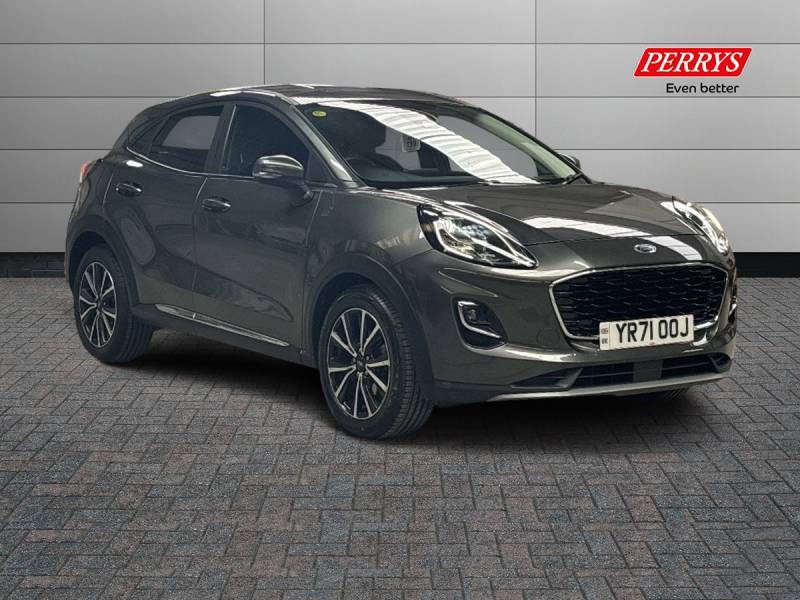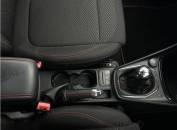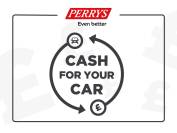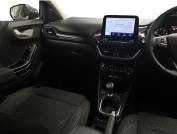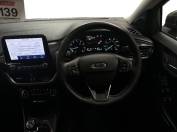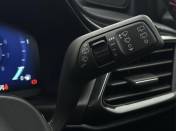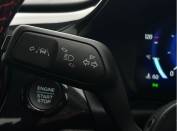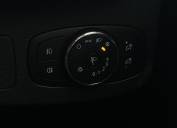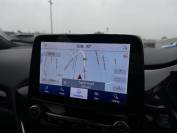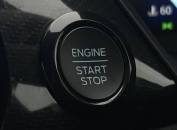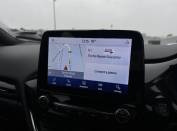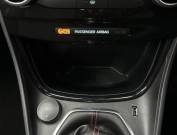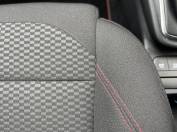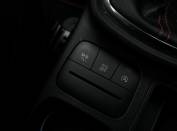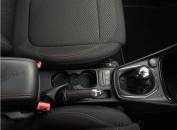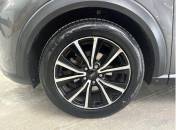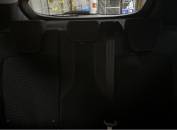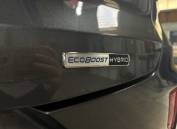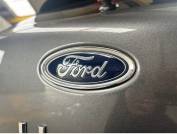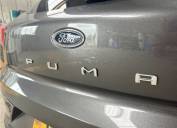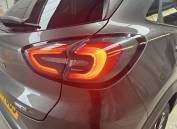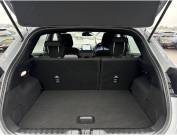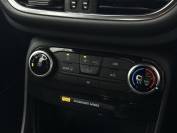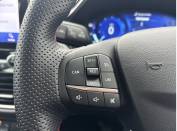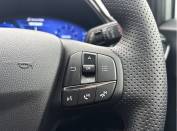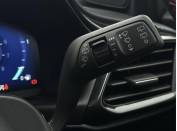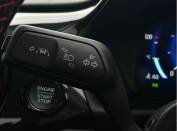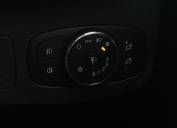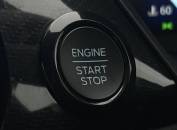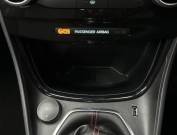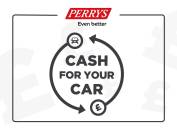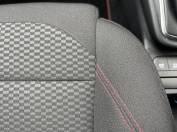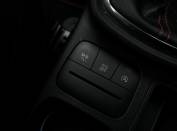FORD PUMA 2021 (71)
1.0 L EcoBoost Hybrid (mHEV) Titanium 5dr 6Spd 125PS
FORD PUMA 2021 (71)
1.0 L EcoBoost Hybrid (mHEV) Titanium 5dr 6Spd 125PS
Financial Disclosure
Perrys is Authorised and Regulated by the Financial Conduct Authority. (307639 ) Finance Subject to status. Other offers may be available but cannot be used in conjunction with this offer. We work with a number of carefully selected credit providers who may be able to offer you finance for your purchase. Perrys - 500 Pavilion Dr, Northampton NN4 7YJ. Companies House Number:972286. FCA number: 307639 .
Finance
We can introduce you to a limited number of lenders whose finance products will have different commission amounts payable to us for introducing you to them. This may be in the form of a fixed fee, a percentage of the balance financed, or another incentive.
The amount of commission that we expect to receive will be detailed to you clearly when we present you with a finance payment offer sheet. The exact commission amount payable to us will be presented to you once your finance proposal has been accepted, and always in good time before you complete any retail finance documentation with us.
We are a credit broker and will not provide you with impartial advice.
We actively monitor all finance transactions to ensure compliance and maintain transparency in all our dealings.
Any lenders we use will conduct a full credit search to decide if they can offer you finance. This search will show on your credit file and will be seen by other lenders. If the lender is unable to offer you finance, we will try up to three additional lenders, each of whom will record a search on your credit file. If these lenders are unable to offer you a finance agreement, we will then contact you and ask if you wish us to contact further lenders on your behalf.
Finance Products:
We will provide you with information to assist with your funding decision relating to Credit Agreements such as: Hire Purchase, Conditional Sale, Personal Contract Purchase (PCP), Personal Contract Hire (PCH) and Finance Leasing.
We will also send you Finance Product Information / Videos by email.
We do not charge you a fee for our services. Whichever lender we introduce you to, we will typically receive commission from them (either a fixed fee or a fixed percentage of the amount you borrow). A customer may ask for commission disclosure at any time from our initial discussions through to the point when their agreement is set live.

Independent Road Test Video & Review Courtesy of Car and Driving
Ten Second Review
Ford's little Puma small SUV was launched in the middle of the Covid crisis, but that didn't stop this 2020 market entrant from becoming the UK's best-selling car. Now the brand has usefully updated this model, with a smarter look and a redesigned, better-connected interior. The major reason you might like it though - this car's sharp, engaging handling - remains as before.
Background
You'll probably be aware of Ford's Puma - it's a strong seller. The name was borrowed from a much-loved turn-of-the-century little Ford coupe, but what we've got with this car is what the brand calls an 'SUV-inspired Crossover'. Here, we look at this car's mid-term facelift, which builds on sales success which saw the original version of this model topping the UK car sales charts in 2023. As before, this Puma it's good looking, efficient and spacious by class standards, with loads of clever interior touches too. And if it can deliver on its dynamic promises, you might just have here pretty much everything you'd want a small SUV to be. Is that what this improved Puma serves up? Time to find out.
Driving Experience
Ford hasn't fundamentally changed anything about the engineering or handling of this revised petrol Puma; it didn't need to. This was already the most engaging car to drive in its segment. What the company has done (rather disappointingly) is drop the sporty 1.5-litre four cylinder engine previously fitted to the top Puma ST, so all Pumas now use some sort of three cylinder 1.0-litre EcoBoost mild hybrid 48V unit, the powertrain you probably would have chosen anyway. As before, for mainstream models this comes in either 125PS or 155PS forms, the lesser engine offered with either 6-speed manual or 7-speed automatic transmission. The 155PS variants come only in auto form. As does the top sporty ST flagship variant, which gets this 1.0-litre engine tuned up to 170PS. The availability of a manual transmission Puma ST was deleted along with that much more powerful 200PS 1.5-litre four cylinder engine. Selectable drive modes feature - 'Normal', 'Eco', 'Sport', 'Slippery' and 'Trail'. As before, the 1.0-litre EcoBoost petrol unit isn't a full-Hybrid; ie it can't ever power the car on battery power alone. Instead, an 11.5kW integrated starter/generator recovers energy when coasting or braking which then gets stored in a small lithium-ion battery. This is then used to assist the engine during acceleration and to run the stop/start system. The rest to 62mph sprint in the 125PS model takes 9.8s en route to 119mph, figures the 155PS model improves only slightly to 8.7s and 124mph. The 170PS ST is a bit faster (7.4s and 130mph). With the Puma ST derivative, an optimised chassis features bespoke twist-beam, anti-roll bar and damper configurations. And steering response is 25% faster and the brakes are 17% larger than the standard Puma. There's also now the option of an all-electric model, the Puma GEN-E, which uses a 166bhp electric motor drawing from a 43kWh battery offering up to 234 miles of EV range.
Design and Build
The visual changes to the updated petrol model are quite subtle; revised headlights that incorporate a smarter daytime running light signature and a restyled version of the Ford grille badge. That grille is dechromed with 'Titanium'-spec models, while 'ST-Line' variants get a more aggressive front bumper. As before, the headlights are high up on the bonnet (like the turn-of-the-century Puma coupe) and Ford says that the beady daytime running lights are a nod to a more modern Ford coupe, the GT supercar. Maybe. The GEN-E electric model's fractionally larger thanks to its slightly stretched B-car platform; and it looks a little different with its revised bumpers and blanked-off grille. Inside, the update changes are far more obvious. The redesigned dashboard is less cluttered than before and features slim air vents, a wraparound feel and a revised two-spoke squared-off steering wheel. Because the GEN-E version doesn't need a gearstick or a manual handbrake, Ford has been able to redesign the centre console of that version. The displays used across the range are larger than with earlier Pumas: there's now a 12.8-inch customisable digital instrument panel with higher-definition graphics. And a 12-inch SYNC4 central infotainment monitor which apparently has 'twice the computing power' of the previous SYNC3 system. Underneath that screen lie new 'soft' buttons for the climate control and heated seats. Plus there's a new 'phone storage compartment with an intregrated wireless charging mat. Synthetic leather upholstery adorns the seats, the armrest and the steering wheel, with different stitching colours depending on the trim level you've selected. And there's smart ambient lighting to give the cabin a classier feel. As before and as you'd expect from a supermini-based SUV, there isn't a great deal of space in the rear, but a couple of adults can be accommodated reasonably easily for medium-length journeys. We continue to be impressed by the boot. At 456-litres in the petrol model, it remains one of the very biggest trunks in the small SUV segment and can be accessed by a powered hands-free tailgate. There's also an adjustable-height floor that can be folded back against the back seats. Under the floor, there's still a drainable 'Megabox' for dirty items, a strong selling point. The GEN-E has a larger 574-litre boot and an additional 43-litre under-bonnet 'frunk'.
Market and Model
Puma pricing reflects current figures in the volume part of the small SUV segment. To be specific, that means a starting point of around £26,000, with figures rising to around £34,000 at the top of the range. Trim levels are based around familiar 'Titanium' and 'ST-Line' badging, plus a plusher 'ST-Line X' option before you get to the top 170PS ST performance model. Across the line-up, there's now a smarter range of colours. The GEN-E electric model starts from around £30,000 and has a different trim structure - 'Select' and 'Premium'. All models come with LED headlights and alloy wheels - 17-inch rims on mainstream versions, 18-inchers on the 'ST-Line X' and GEN-E 'Premium'; and 19-inch alloys on the top ST. There's also LED tail lamps with auto high beam, rear privacy glass, a Quickclear windscreen and cruise control with Intelligent Speed Assist. Inside, the new screens are standard-fit - a 12.8-inch instrument cluster and a 12-inch SYNC4 central monitor with 'Apple CarPlay' and 'Android Auto', plus connected navigation, a 6-speaker audio system and FordPass Connect media connectivity. You also get Electronic Automatic Temperature Control, a rear view camera and the useful 'Megabox' extended loadspace in the boot. Drive assist tech includes 'Pre-Collision Assist' with Autonomous Emergency Braking and pedestrian/cyclist detection. Plus a Driver Impairment Monitor, Post-Collision Braking, a Lane Keeping Aid and Lane Departure Warning. New options added to this revised range include 'Intersection Assist', 'Reverse Brake Assist' and 'Predictive Speed Assist' (the latter feature automatically slowing the car when approaching a corner or a junction). Anti-glare matrix headlamps are also now optional, as are Predictive Bending Dynamic Lights, which utilise GPS data to automatically adjust the lighting for forthcoming bends.
Cost of Ownership
Being based on Fiesta engineering promises decent efficiency, as does Ford's EcoBoost mild hybrid technology and that's how it turns out. For the 125PS variant, Ford is talking about CO2 emission readings from up to 122g/km and a combined cycle WLTP fuel return of up to 52.3mpg - or 130g/km and 49.6mpg in auto form. For the 155PS derivative, the figures are 49.6mpg and 128g/km. For the 1.0-litre ST 170PS version, the figures are up to 47.1mpg and 136g/km, a decent improvement on the stats of the old 1.5-litre ST variant (42.8mpg and up to 148g/km). If you want real efficiency though, you'll need to wait for the full-electric Puma 'Gen-E' model. This will offer about 230 miles of range, will charge at up to 100kW and will give you a 10-80% top-up in under 35 minutes. For the combustion models, the claimed efficiency readings are all aided by what the brand calls 'Torque substitution', which deploys the electric motor functionality of the hybrid system's 'BISG' 'Belt-driven Integrated Starter/Generator' to provide up to 50Nm of torque - reducing the amount of work required from the petrol engine. The 'BISG' is also able to aid the powerplant's stop/start system in urban traffic, restarting the engine in approximately 300 milliseconds - about the same as the blink of an eye. And the 'BISG' also enables the Puma EcoBoost Hybrid's Auto Start-Stop technology to operate in a wider range of scenarios for even greater fuel savings, including when coasting to a stop below 10mph, and even when the vehicle is in gear with the clutch pedal depressed. If you really want strong efficiency returns from your Puma, then you're really going to want the GEN-E full-electric version, which offers a range of up to 234 miles. If you connect the car up to a 100kW DC rapid charger, you'll be able to replenish the 43kWh battery from 10 to 80% in just 23 minutes. An AC home charge using a typical 7kW wallbox should be possible in under 7 hours.
Summary
Back in late 2019, Ford's decision to re-use the Puma name for this little SUV wasn't universally popular amongst enthusiasts for the original coupe model, but that doesn't matter much. After all, for the real target market here, this car's badge is more likely to suggest sports ware or trainers than a classically-styled sports coupe. And that lifestyle orientation fits with the kind of little SUV this Ford is still trying to be - active, trendy, charismatic and current. It isn't perfect of course. This Puma's a little on the pricey side once you specify a decent trim level. Overall though, there's an awful lot to like here, particularly with this improved model. Ford needs a credible entry-level point for its SUV line-up and this Puma fills that role very well, while setting benchmark standards for the kind of driving enjoyment a little car of this kind can serve up. As enthusiasts, we still can't help wishing it was a small coupe. But as pragmatists, we reckon Ford has got this car just about right.


